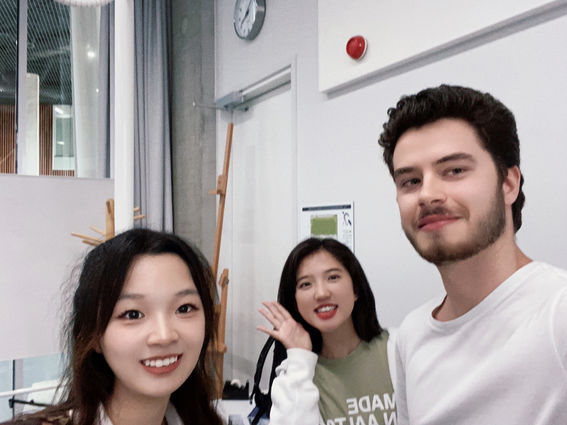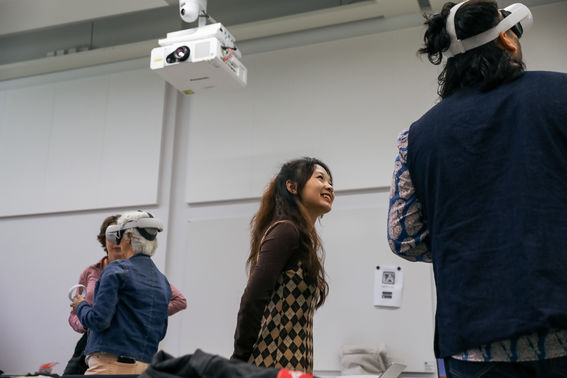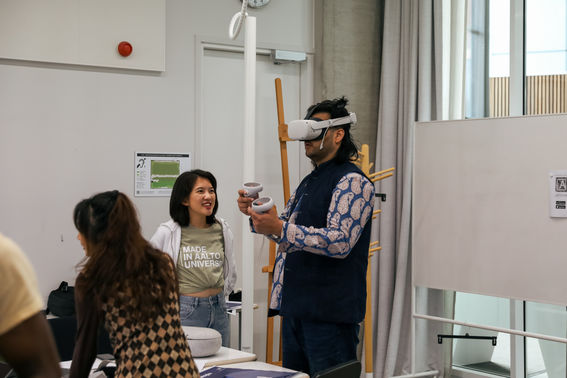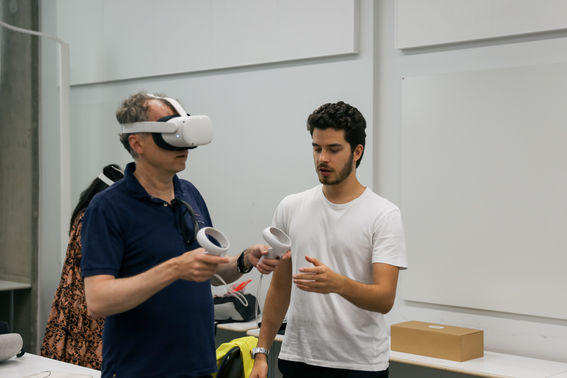Aalto University Summer School pupils showcase immersive virtual reality prototypes at demo day
The Introduction to Virtual Reality summer course has come to an end. One of the first-ever undergraduate courses by Aalto University Summer School was concluded with a demo day showcasing the students’ creative prototypes and hard work over two weeks. Demo days are also an industry practice in many companies and a way of collecting feedback in creative fields.
The course familiarised students with various VR technologies, their connection to the human body, and essential vocabulary to enhance their learning and grasp related concepts. The class covered how software applications and game engines are utilised to develop immersive multisensory encounters, including examples from both creative and industrial settings.

Immersive learning prototype
During the course, visiting summer school students Xiaoxi Wang, Zhiyi Chen and Afonso Mourão created a virtual reality prototype, “Edutopia”, a platform for sharing knowledge and learning something new. The prototype consisted of three immersive rooms that introduced the solar system, immune system and nature room, each designed by one group member. The aim of the project was to break geographical barriers and contribute towards a world where everyone has access to education despite their location.

New perspectives for design studies
For Xiaoxi, a product design and manufacturing student, one of the main takeaways from the course was to learn about audio design. “I’m interested in audio design because we don’t focus on the audio in my usual design studies. It is very important for virtual realities.” Together with Zhiyi, they visited the local contemporary museum Kiasma and tried the VR experience. “VR is a future trend, and that’s why we took this course”, Xiaoxi sums up.

Low-treshold tools for creating VR experiences
Zhiyi, also a product design and manufacturing student, already had some experience in VR. However, this course gave her more approachable tools for future projects. “I have studied VR online, but this course was more organised, and we learned together. Before taking this course, I used another platform that required coding and was harder to use. In this course, We used Mozilla Hub, which is easier for beginners to create some simple VR things.”

Going for a pleasant use of VR
Computer science student Afonso summarises the two weeks at Aalto University: “We have learned how to make an experience with VR more enjoyable and take into account different factors like avoiding motion sickness. The university has very good resources; there are many places for students to test their projects, like the VR Hub. Also, I really enjoyed the teaching methods.”
All in all, the Introduction to Virtual Reality course highlights have been creating new VR experiences and working in groups with members from all over the world. The full potential of VR in many fields, like remote working, is yet to be explored, and that leaves the students excited about the future.

